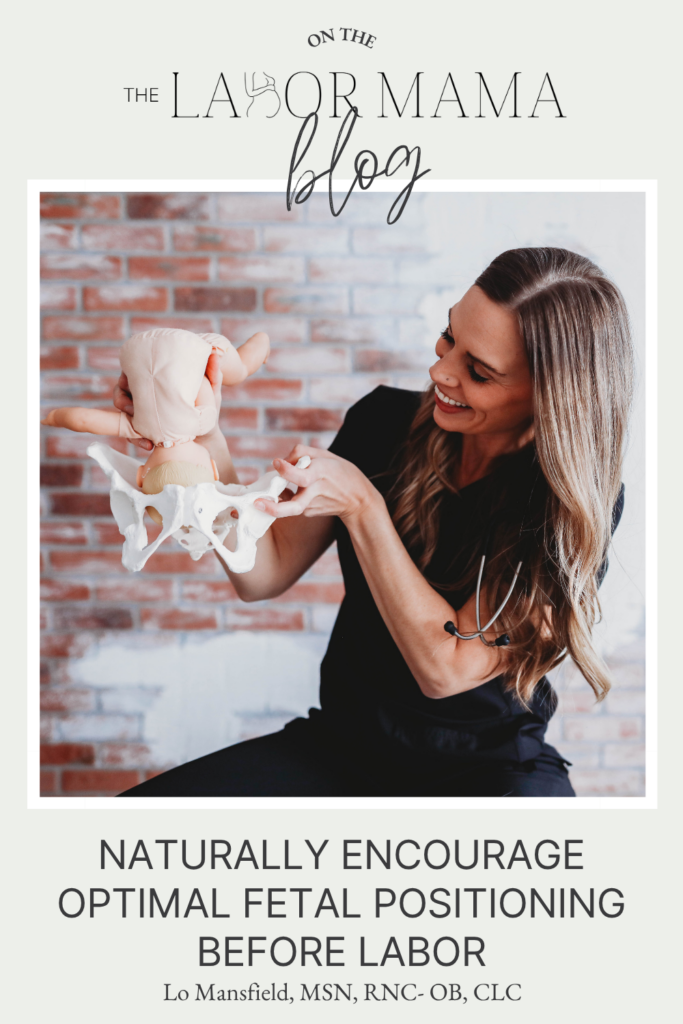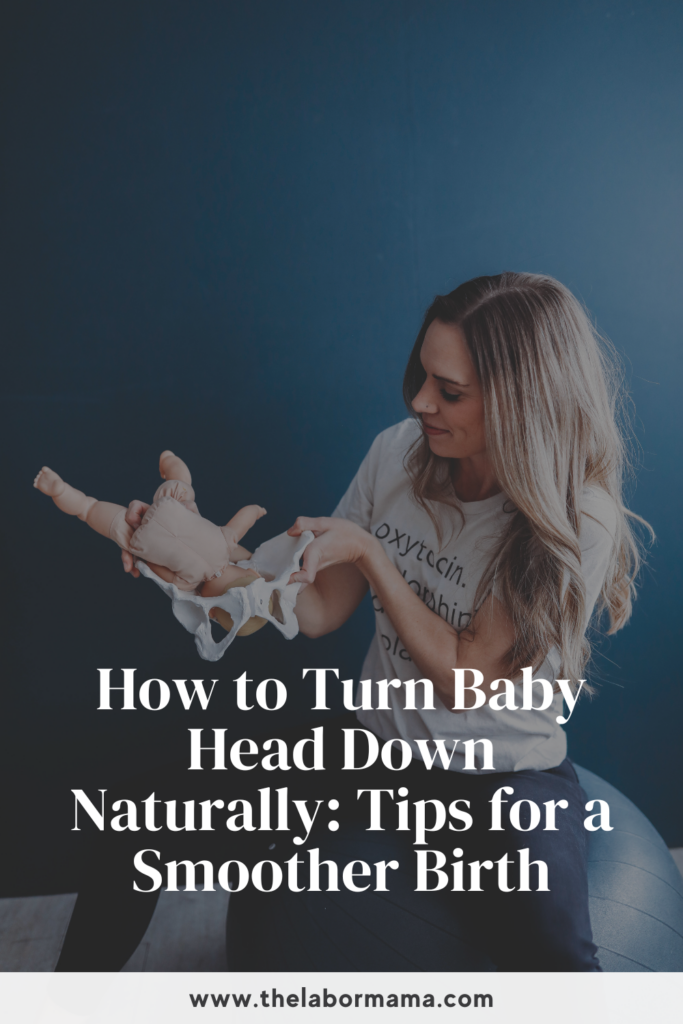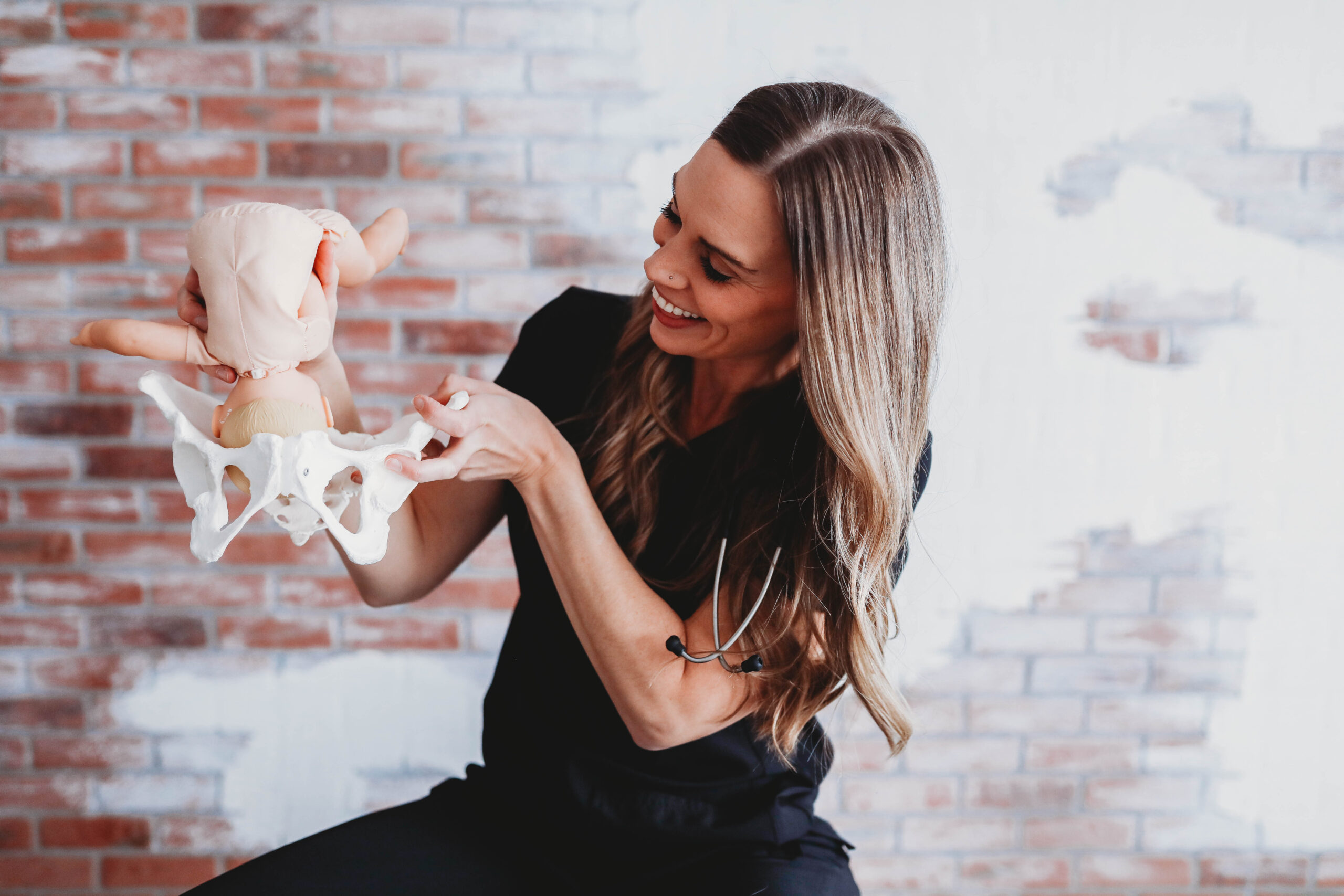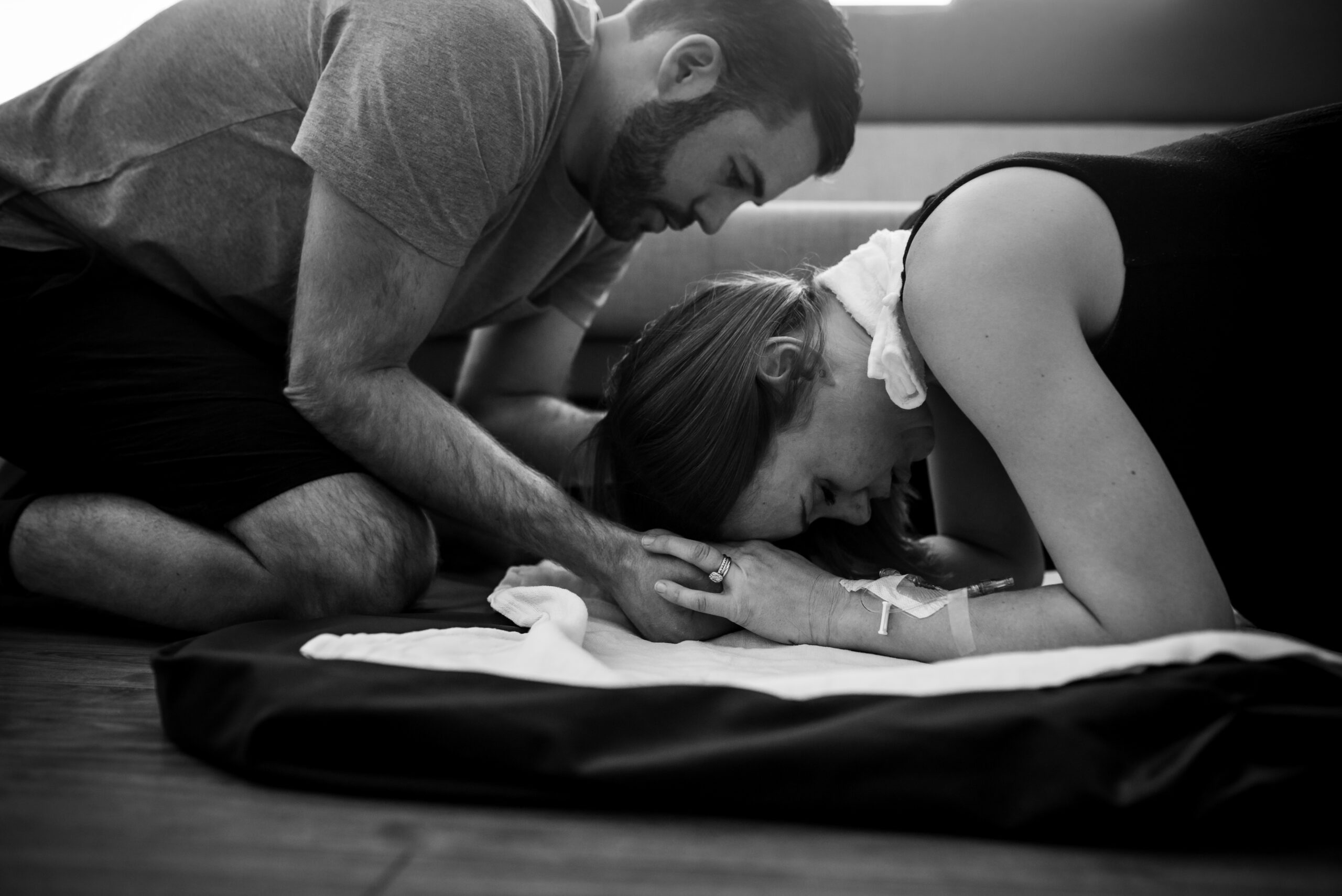Let’s talk about something that rarely gets enough airtime during pregnancy: fetal positioning. While it might sound clinical, understanding how to turn baby head down naturally is a powerful part of birth prep. Your baby’s position in the womb can impact how labor begins, progresses, and feels (aka – it can affect how painful labor is and how long it goes)!
The good news? There are plenty of natural, safe ways to encourage an optimal fetal position—no medical degree or fancy tools required.
Before We Get Into It – Who is The Labor Mama and Why Am I Here?
Hey friend! I’m Lo – also known around here and social media as The Labor Mama. I’ve spent my nursing career in labor, delivery, and postpartum, have birthed 4 of my own babies, have labored thousands of mamas at the bedside, have taught hundreds of students online, and have even delivered a few speedy little babies with my bare hands (oops).
Here at TLM, I offer online classes to empower you the way everyone should be. The education + support I offer gives you experience, evidence, and empathy; you’re getting all of my years of “clinical” RN knowledge, beautifully combined with my real experiences as a mama and a nurse. These are not your average hospital classes (those won’t do it, I promise), and honestly, birth, postpartum, and breastfeeding don’t follow a textbook or protocol anyway. You need to know so much more than that!
If you want to connect with me further, head to Instagram. There are hundreds of thousands of us over there learning together daily.
A note: This post may include affiliate links. This means if you make a purchase after clicking a link, I will earn a small commission (thank you)! Rest assured, this comes at no additional cost to you. You can read TLM’s full disclosure here.
First Things First: What Is Fetal Positioning?
Your baby’s presentation refers to which part of their body is presenting at the cervix. Throughout pregnancy, babies move a lot, which is totally normal and even reassuring. But by around 32–36 weeks, most babies settle into a head-down position, also called vertex or cephalic presentation.
That means their head is closest to your cervix and is likely to be the first part of their body you meet during birth. This head down position is ideal for vaginal delivery. Occasionally, babies might be head down but face-first or brow-first (instead of the crown of their head), which can make vaginal delivery more difficult or even impossible depending on the severity of the presentation.
What if baby isn’t head down? They might be in a transverse (sideways) or breech (feet or butt-first) position. But don’t stress—about 96% of babies do end up head down by week 36.
Why “Head Down” Isn’t the Whole Story
So let’s say your baby is head down. Great! That’s a huge win. But there’s actually a more specific ideal position you might not have heard of: Occiput Anterior (OA).
This means the back of baby’s head is aligned with the front of your body. Even better? When baby is slightly rotated toward your left side, this is called Left Occiput Anterior (LOA)—and it’s considered the optimal fetal position for birth. Right Occiput Anterior (ROA) is a close second.
On the flip side, you might hear about Occiput Posterior (OP) babies—sometimes called “sunny side up.” These babies are head down but facing forward, which means their spine is against yours. This position can lead to intense back labor and a longer pushing phase.
Then there’s Occiput Transverse (OT)—when baby is lying sideways in the pelvis. OT babies often rotate to OA or OP during labor, but if you know baby is OT before labor, you’ll definitely want to try some positioning techniques to help that little spine swing to the front.
Belly Mapping: A Fun Way to Check Baby’s Position
So how do you know where your baby is in the first place?
While your provider will likely give updates (especially during your third trimester), you can also try belly mapping at home. This hands-on activity helps you figure out your baby’s position based on their movements and where you feel kicks or hiccups. It’s also a sweet way to bond with your baby before birth.
I’m doing it here when I’m 35 weeks – check it out!
Can You Help Baby Move? Yep.
If your baby isn’t in a head-down or optimal position, don’t panic. There are several gentle, natural things you can try—especially after 32 weeks—to help turn baby head down naturally and encourage a smoother labor.
My favorite resource? Spinning Babies. Their techniques are trusted by birth workers everywhere (literally—we’d pull up their site during births all the time).
Here are a few key links worth bookmarking:
Looking for professional help? Some mamas also try Webster-certified chiropractic care or acupuncture and moxibustion, both of which have shown promising results in helping babies turn head down.
Here’s a study on acupuncture/moxibustion and another one on the Webster Technique if you’re curious.
Below are some of the most effective, simple techniques for how to turn baby head down naturally at home. These movements and positions help create space and alignment so your baby can settle into the ideal position for birth.
At-Home Positions to Encourage Optimal Fetal Positioning
Many women become more aware of their own posture and movement in the third trimester—and for good reason. The way you move and sit can directly impact how much space your baby has to rotate into a good position.
Here are a few techniques to try regularly:
Tailor Sitting
Sit up tall with a straight back and either cross-legged or with one leg extended. Consider using a birthing ball or sitting in a chair that allows your hips to open wide.
Pelvic Tilting
This is not the same as “cat-cow”! You want to keep your shoulders stable while tilting your pelvis forward and back. Do 10 reps twice a day, either on hands and knees or while sitting on a birthing ball. Bonus: this can help relieve lower back tension, too.
Chair Sitting
Try sitting backward on a chair (arms resting on the back of it) to gently encourage forward-leaning posture. This one may not be ideal if you have pelvic pain, so listen to your body.
Squats
Great for opening the pelvis and strengthening your legs. Keep your knees tracking over your feet. If your baby is in the OA position, squats can also support further descent. But skip them if baby is OP!
Forward-Leaning Inversions (FLI)
One of our favorite tools! These help release tension in the lower uterine area, making things looser and creating space for baby to shift.
How to Do It:
- Kneel on the edge of a bed or couch.
- Slowly lower to your hands, then your elbows (use pillows for support).
- Let your head hang while your hips stay high.
- Hold for about 30 seconds, then carefully come back up.
When to Start:
- Around 20 weeks for general balance
- Daily from 30–32 weeks
- More frequently if baby is breech or OP
- Always check with your provider before trying FLI, especially if you have high blood pressure, dizziness, or other concerns.
Here’s more info from Spinning Babies if you want to go deeper.
The Flashlight Trick (Yes, Really)
Here’s a quirky little tip we love: imagine there’s a flashlight coming out of your belly button. Where’s it pointing?
If it’s pointing up (like when you’re slouched in a car seat or sunk into a couch), that’s not doing your baby any favors. Try to sit in positions where that “light” is shining straight forward or slightly downward— knees apart, spine supported, and pelvis open.
It may feel silly, but it’s a super easy way to stay mindful of posture throughout your day. More here on this!
Final Thoughts on How to Turn Baby Head Down Naturally & Optimal Fetal Positioning
At the end of the day, you can’t control everything about labor—but understanding fetal positioning gives you a practical, empowering way to support your body and your baby as you prepare for birth.
So give these tips a try, trust your instincts, and don’t be afraid to ask your care team questions. Whether your baby flips into the perfect spot on their own or you use some of these tools for how to turn baby head down naturally, you’re doing meaningful work to set yourself up for a smoother, more confident labor.
And if you want more step-by-step guidance on preparing your body for birth—everything from fetal positioning to labor coping tools—come join me inside Your Body, Your Birth. It’s the birth course that covers all of this (and more!) so you can walk into labor feeling informed, empowered, and ready. 💪
Hang in there, mama—you’ve got this.
xx- Lo
Loved this blog post? Here’s some others you’ll probably like:
- How To Start Labor At Home: Do Natural Labor Induction Methods Work?
- Beautiful Birth Images That Are Worth Capturing
- Real Labor vs False Labor: The 4 Types of Contractions
More resources (and freebies!) for you to take a peek at:
- Comprehensive Birth Plan and Birth Priorities templates
- A complete Third Trimester Checklist
- The RN + mama of 4 Ultimate Packing List
- The Labor Mama online birth, baby and breastfeeding classes for every family
Liked this post? Don’t forget to Pin it!






